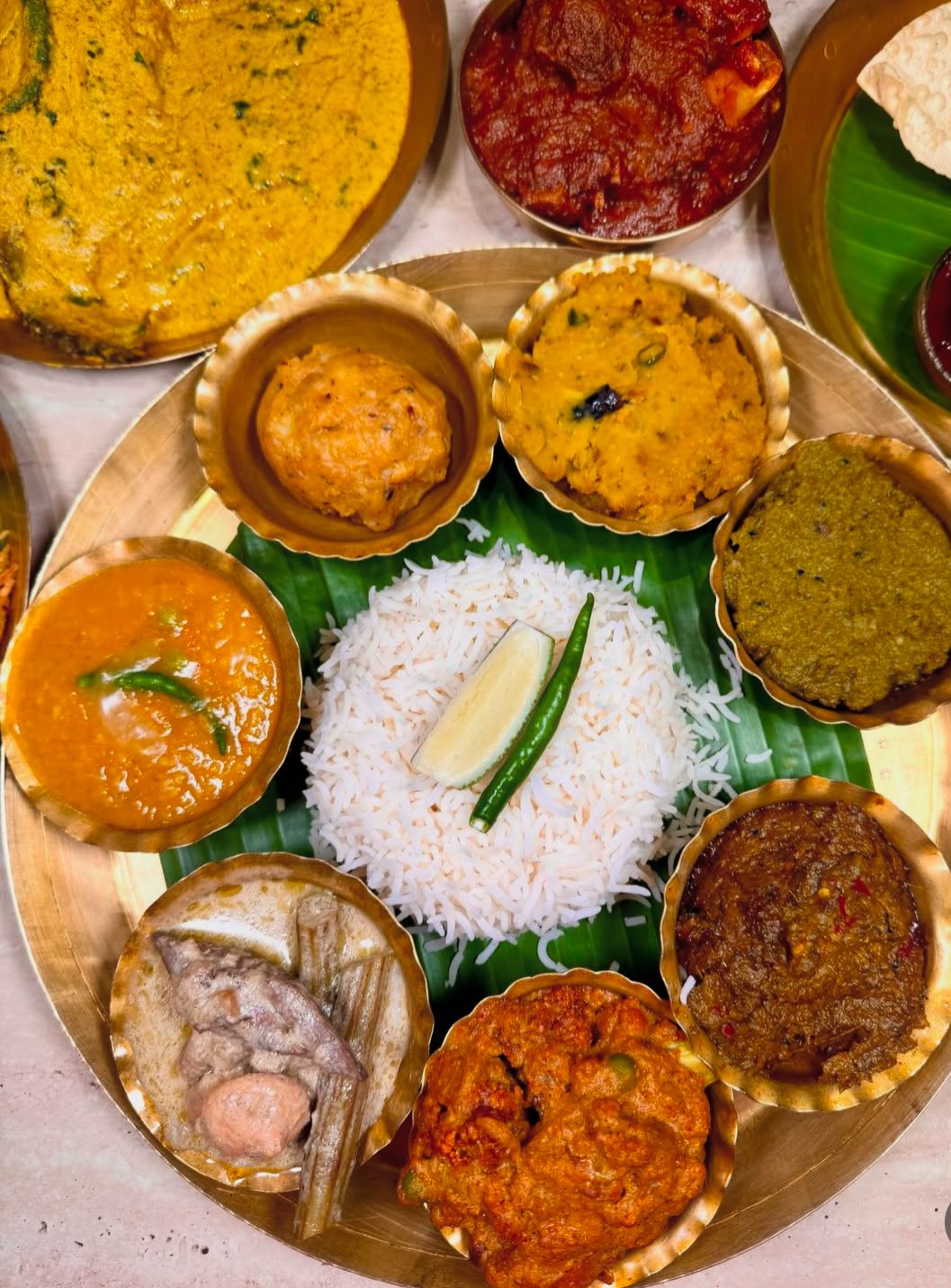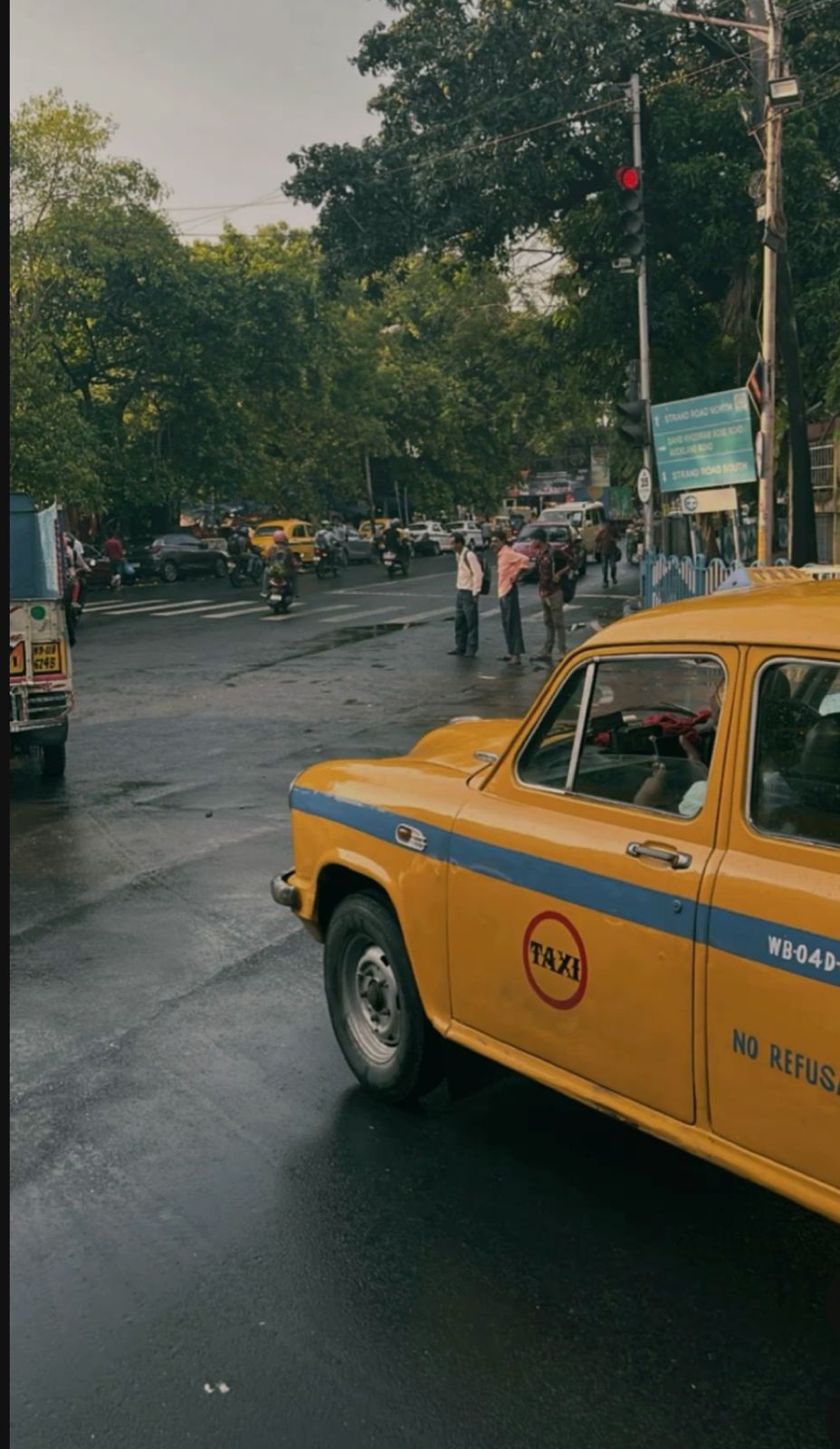Durga Pujo in Kolkata: A Filmy Saga of Devotion, Joy, and Extravaganza
December 10, 2024 | by amleshpriyam21@gmail.com
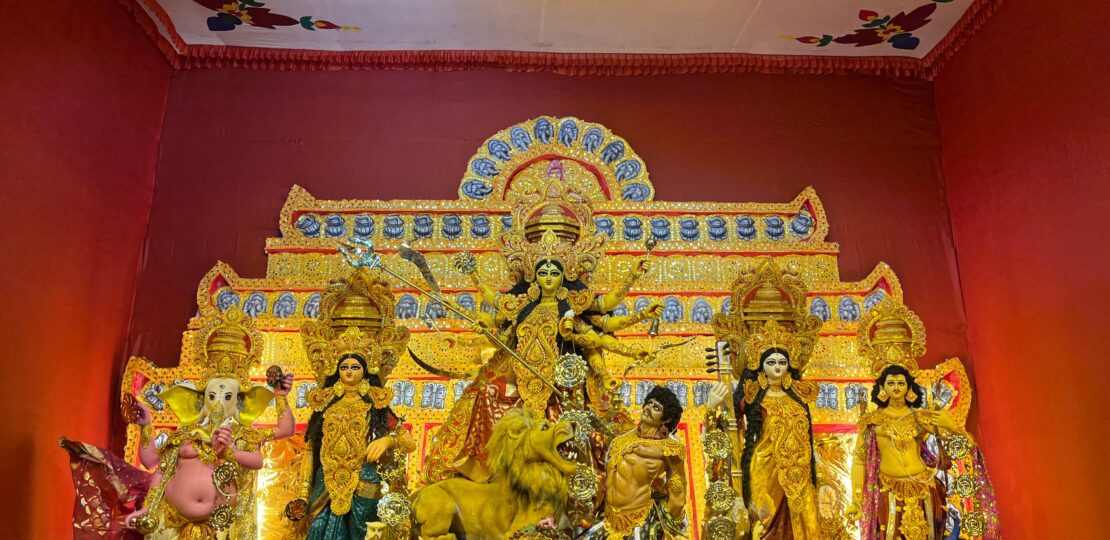
If festivals were Bollywood blockbusters, Durga Pujo in Kolkata would be the “Sholay” of celebrations—grand, timeless, and unforgettable. It’s not just a festival; it’s a feeling, a spectacle, and a five-day extravaganza where the city transforms into a film set, brimming with drama, colors, and soul-stirring emotions. So grab your popcorn (or better yet, some bhog), as we unravel the cinematic magic of Durga Pujo in the City of Joy.
Months before the first beats of the dhaak (traditional drums) resonate, the city begins its preparations. It’s like the pre-release buzz of a blockbuster film. Artisans in Kumartuli sculpt idols of Goddess Durga with painstaking detail, turning clay into divinity. Pandals—temporary, thematic temples—begin to rise across neighborhoods, each vying to be the showstopper of the season.
Meanwhile, the streets of Kolkata are abuzz with excitement. Markets like Gariahat and New Market teem with shoppers picking up everything from traditional saris to trendy accessories. It’s a wardrobe change as dramatic as a Bollywood heroine’s makeover montage!
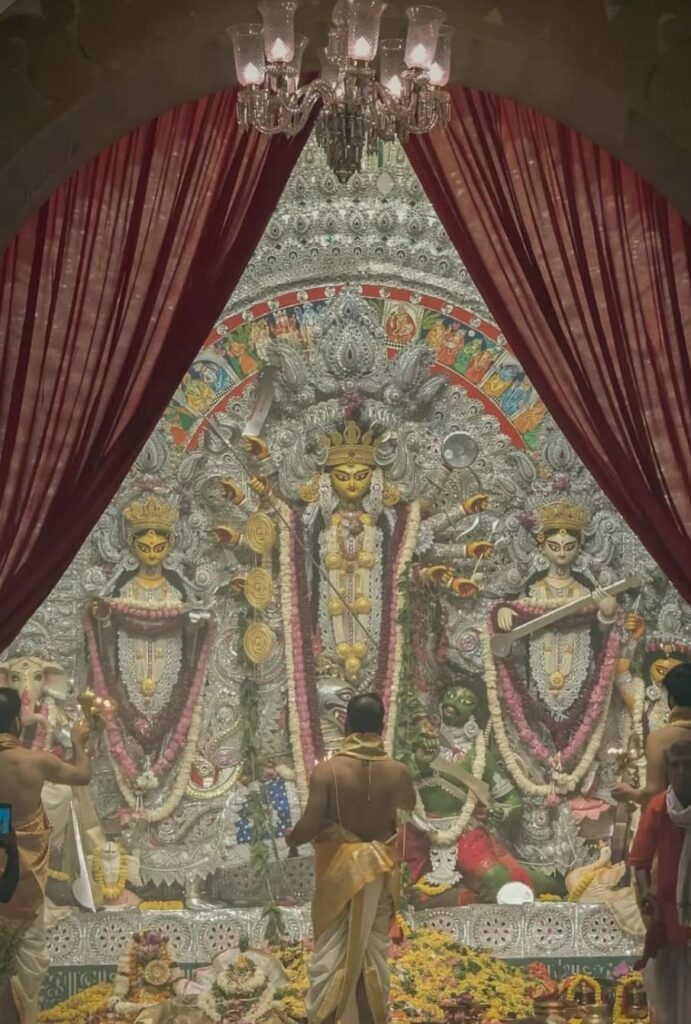
Mahalaya
As Mahalaya arrives, marking the beginning of Durga Pujo, the excitement reaches fever pitch. Early in the morning, radios and televisions across Kolkata broadcast *”Mahishasura Mardini,”* a melodious recital narrating the story of Goddess Durga’s triumph over evil. It’s the goosebump-inducing background score that sets the tone for the week ahead.
By Panchami (the fifth day), the city gleams like a bride adorned in lights. Streets are illuminated, pandals are unveiled, and the aroma of street food—kathi rolls, fish fry, and telebhaja—wafts through the air. The city transforms into a massive open-air film set, with every corner telling a story.
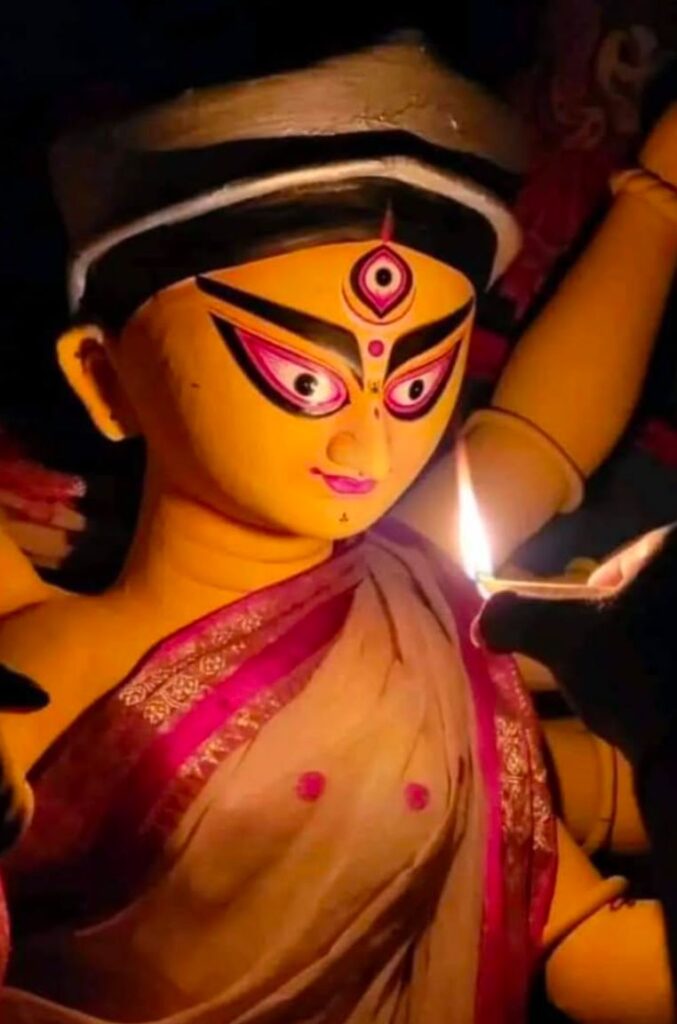
The Pandals—The Cinematic Sets
Imagine the grandeur of Sanjay Leela Bhansali films, but with a spiritual twist. That’s what the pandals of Kolkata are like. Each pandal is a masterpiece, showcasing themes that range from mythology and social messages to recreations of famous monuments.
One year, you might find a pandal designed as Hogwarts, and the next, a replica of the Eiffel Tower. These larger-than-life sets are crafted with such precision that they leave you spellbound. Visiting pandals is akin to a treasure hunt, as you wander through neighborhoods like Ballygunge, Kumartuli, and Shobhabazar, discovering one breathtaking creation after another.
And just like in the movies, there’s a blockbuster hit every year. Be it the South Kolkata pandals with their contemporary themes or North Kolkata’s traditional charm, each one adds its unique flair to the Durga Pujo narrative.
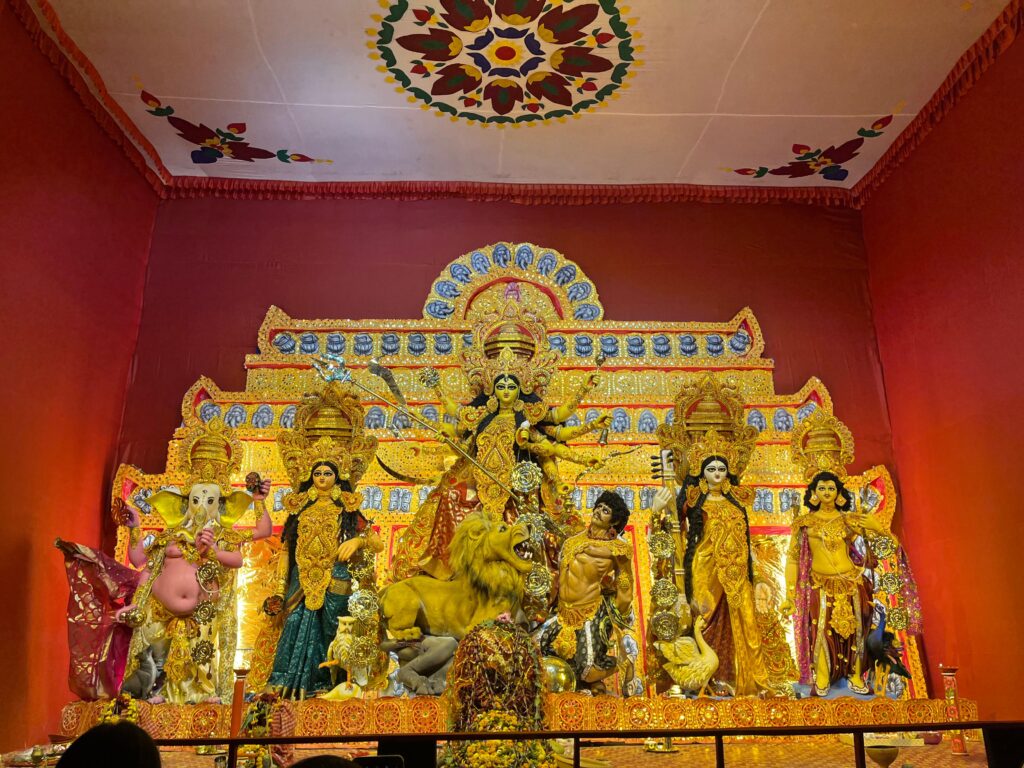
The People—The Ensemble Cast
In this grand film, the people of Kolkata are the vibrant ensemble cast. Decked in their finest traditional attire—saris for women, dhotis and kurtas for men—they bring the festival to life. The streets are alive with laughter, chatter, and the occasional impromptu dance performance to the beat of the dhaak.
Durga Pujo is also a time for reunions. Families gather, old friends meet, and strangers become companions as they share bhog (community feast) or stand in long queues to visit a popular pandal. It’s a social blockbuster where everyone plays a starring role.
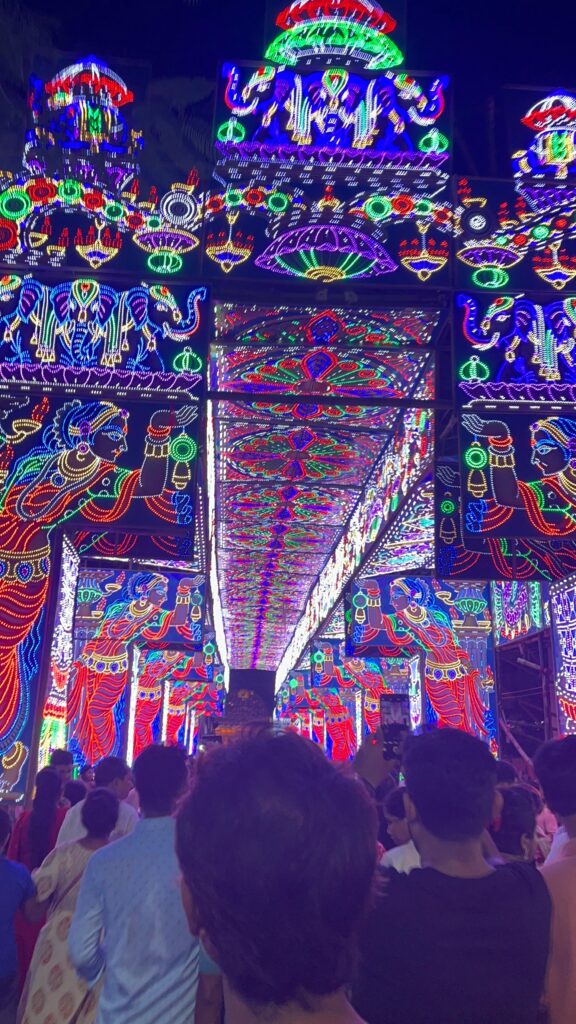
The Bhog—A Culinary Extravaganza
No Bollywood film is complete without a grand feast scene, and Durga Pujo delivers this with aplomb. The bhog, served at pandals, is nothing short of divine. Picture steaming plates of khichuri (rice and lentil dish), labra (mixed vegetable curry), beguni (fried eggplant), and mishti (sweets) shared among hundreds of devotees.
For street food lovers, Durga Pujo is a paradise. From puchkas (pani puri) and churmur to chicken rolls and biryani, the city’s culinary offerings during the festival are a blockbuster hit in their own right. And let’s not forget the iconic Mishti Doi and Sandesh, which add a sweet ending to this flavorful story.
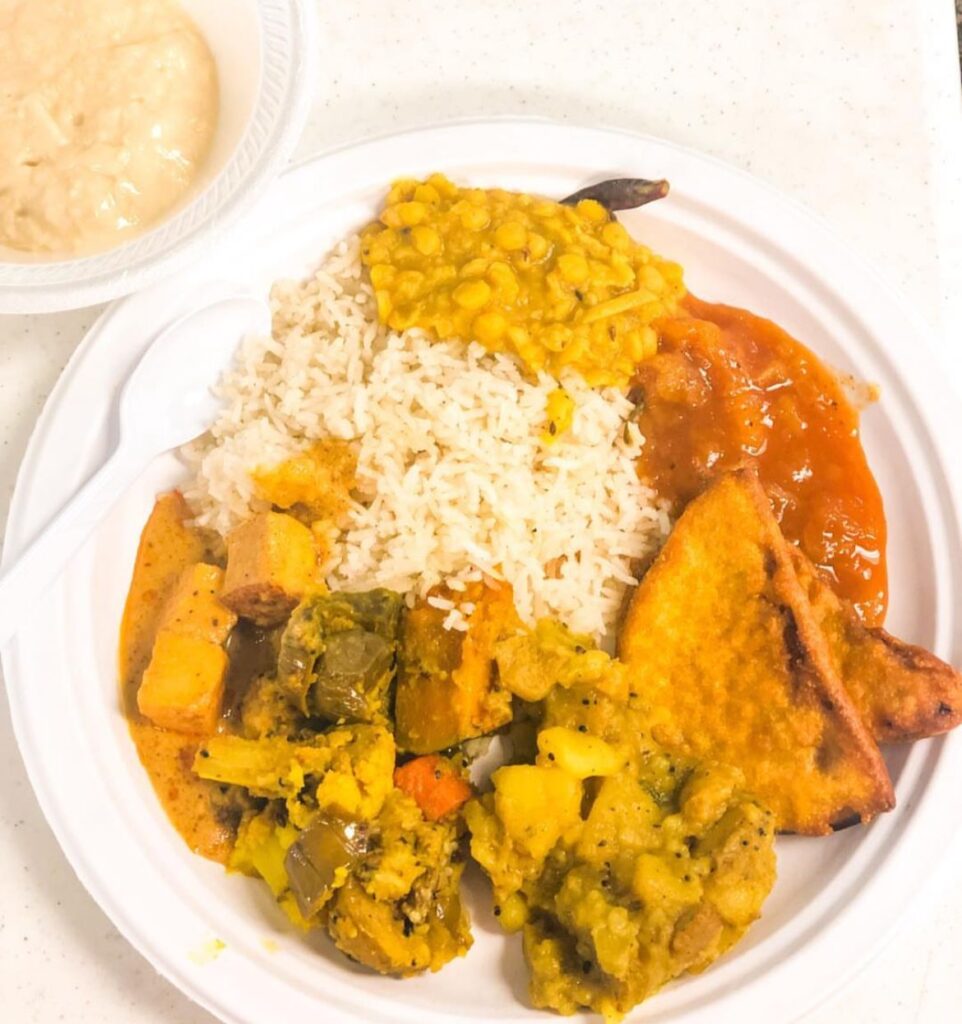
The Dhaak and Dhunuchi Naach—The Action Sequences
Ashtami (the eighth day) is the emotional high point of Durga Pujo, much like the climax of a film. It begins with *Pushpanjali*—the offering of flowers to the goddess. Devotees, clad in pristine white and red-bordered saris, chant mantras in unison, creating an atmosphere that’s nothing short of magical.
The evening brings the “Dhunuchi Naach”—a traditional dance performed with incense-filled earthen pots. It’s an action-packed spectacle as dancers sway to the rhythmic beats of the dhaak, their movements as fiery and passionate as a Bollywood dance number.
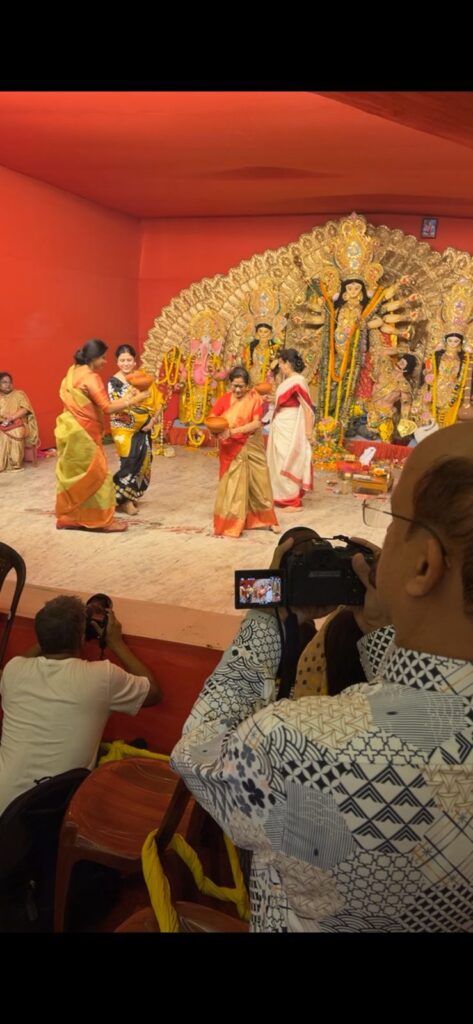
Dashami—The Emotional Climax
Every great story has a bittersweet ending, and so does Durga Pujo. On Dashami (the tenth day), the goddess is bid farewell with the ritual of *Sindoor Khela.* Married women smear each other with vermillion, celebrating the power of womanhood. It’s a scene straight out of a Yash Chopra film, filled with love, camaraderie, and vibrant colors.
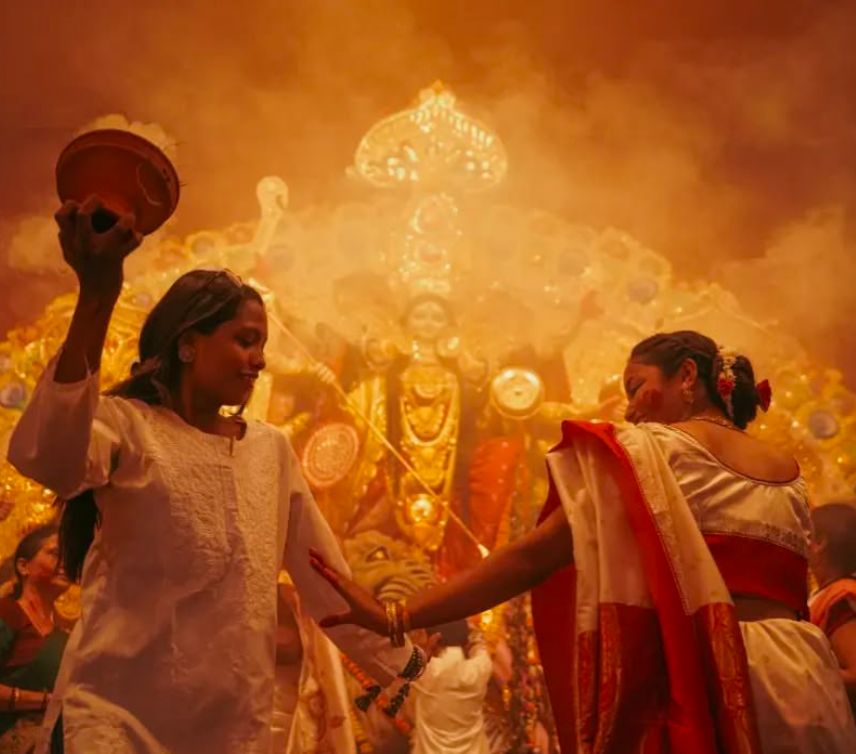
The idol of Goddess Durga is then taken for immersion in the river, accompanied by chants of “Asche bochor abar hobe” (We’ll celebrate again next year). It’s a teary-eyed farewell, much like the final scene of a family drama where everyone parts ways but promises to reunite.
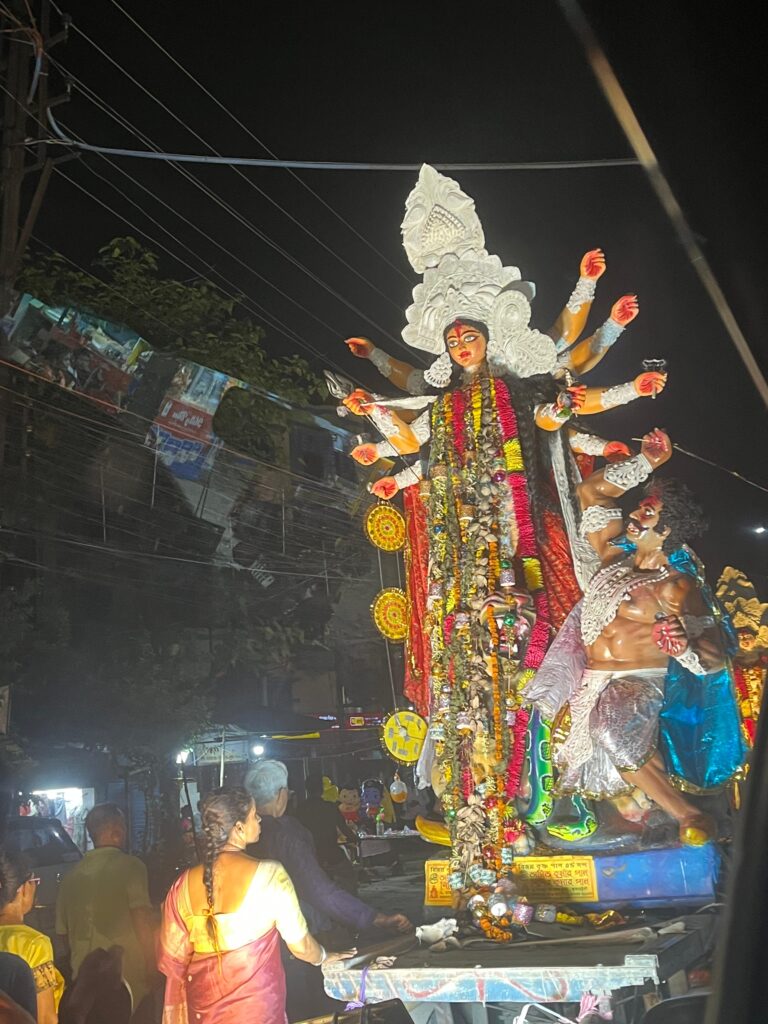
The After-Credits Scene: The Eternal Spirit of Durga Pujo
Even as the festival concludes, the spirit of Durga Pujo lingers in the hearts of Kolkatans. It’s a celebration of art, culture, and humanity, reminding us of the power of unity and faith. Like a classic film, its magic stays with you long after the curtains fall.
So, whether you’re a devotee, a foodie, or an art enthusiast, Durga Pujo in Kolkata promises a cinematic experience unlike any other. As the goddess defeats the demon in mythology, this festival defeats the mundane, filling life with joy, colour, and drama.
“Because in Kolkata, during Durga Pujo, every moment is a blockbuster waiting to happen!” 🎥✨
RELATED POSTS
View all
